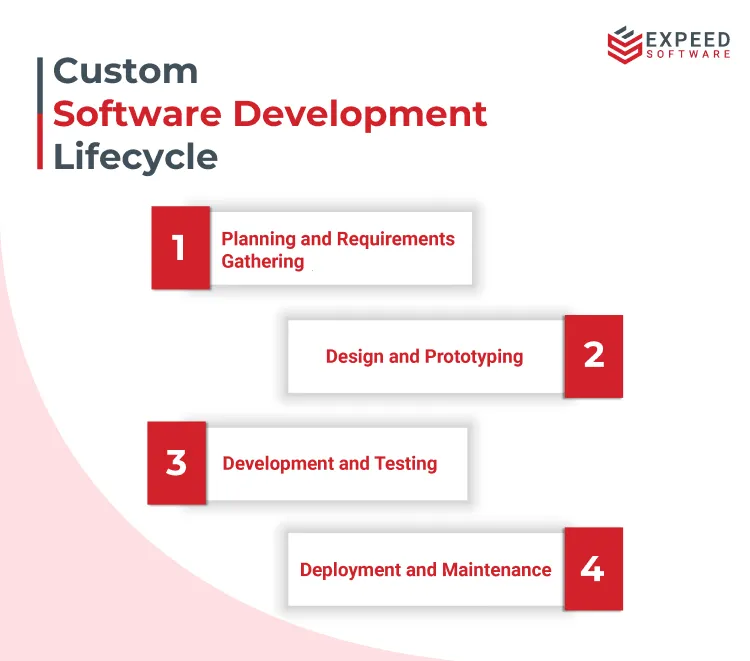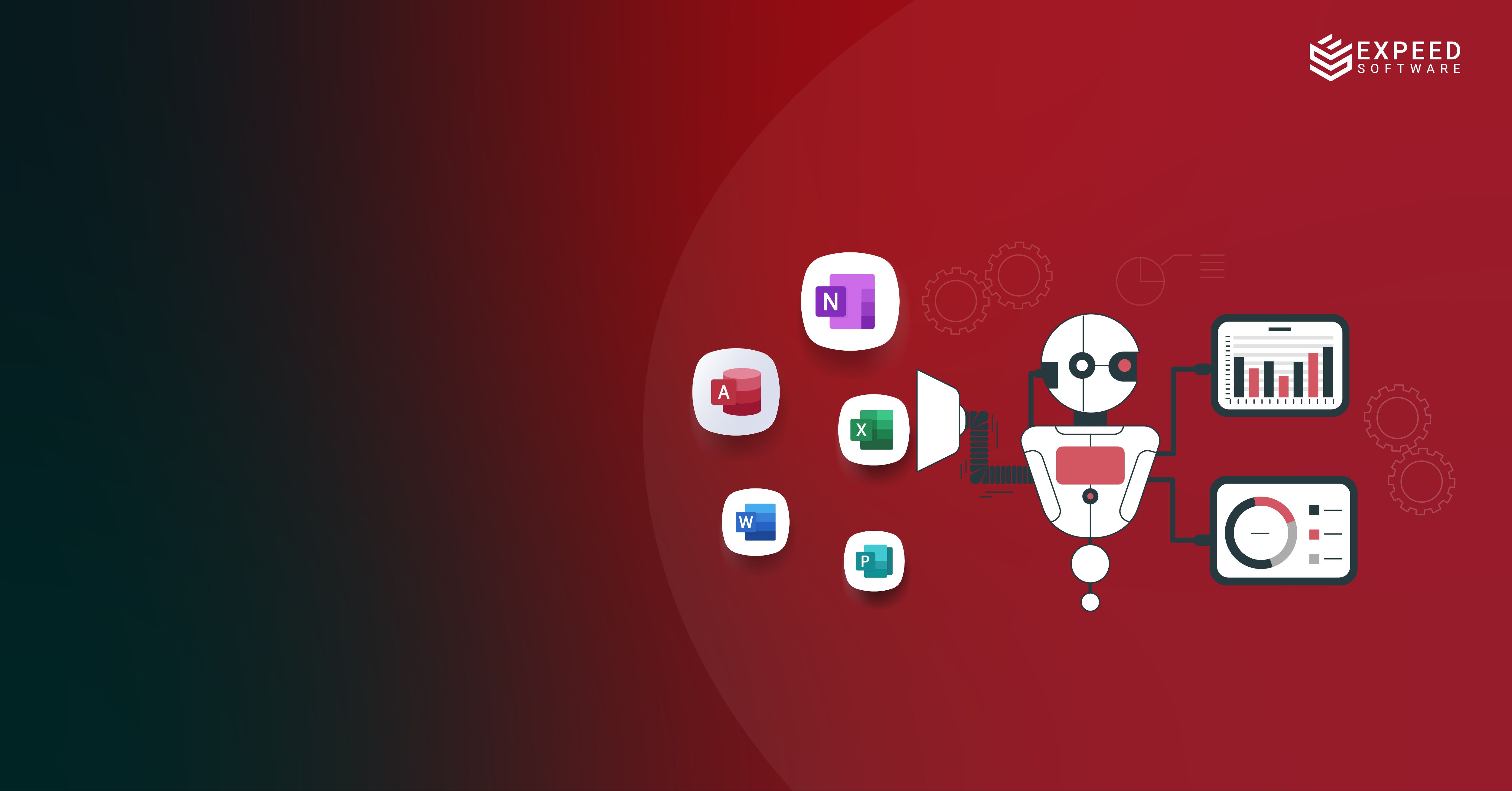Custom software development refers to the process of designing, creating, and maintaining software specifically that is tailored to a particular organization or business. Unlike off-the-shelf software products designed for the mass market, custom software is built to meet the specific needs of an individual business.
Key Differences Between Custom Software and Off-the-Shelf Software
- Customization: Custom software is tailored to the unique needs and workflows of an organization, whereas off-the-shelf software provides more generalized functionality.
- Flexibility: Custom software can be modified and enhanced over time as an organization’s needs change, whereas off-the-shelf software is harder to customize.
- Competitive Advantage: Custom software provides functionality specific to a business, giving them an edge over competitors using generic software.
- Integration: Custom software can integrate seamlessly with existing IT infrastructure and other business systems, while off-the-shelf software often requires custom integration work.
- Ownership: Organizations own the codebase and intellectual property for custom software, whereas off-the-shelf software is licensed from vendors.
Examples of Custom Software Applications
- CRM systems tailored for a specific industry
- ERP platforms built for a company’s workflows
- E-commerce websites with custom features and functionality
- Mobile apps that solve specific business needs
By investing in custom software, organizations can boost their efficiency, productivity, and innovation to fit their individual business needs. The tailored functionality often provides an excellent return on investment (ROI) compared to generic solutions.
Benefits of Custom Software
Custom software enables numerous benefits that can give businesses a competitive advantage. By having software tailored specifically to fit their needs, companies can improve efficiency, be more flexible and scalable, and better meet the needs of their customers.
Competitive Advantage
One of the most notable benefits of custom software is the competitive advantage it can provide. Since the software is customized for a particular business, it allows them to streamline processes and optimize operations in ways that off-the-shelf software cannot. This improved efficiency and productivity can give businesses an edge over competitors.
Flexibility and Scalability
Custom software offers more flexibility to adapt to changing business needs. Because you own the source code and intellectual property, it is easy to modify the software as requirements evolve. This level of flexibility and scalability is difficult to achieve with pre-packaged solutions. Businesses can quickly implement new features and scale capabilities up or down as needed.
Improved Efficiency
Overall, the tailored approach of custom software allows companies to optimize their systems and processes. This leads to improved efficiency, lower costs, higher productivity, and better customer experiences. With the competitive advantage provided by custom software, businesses can get ahead and stay ahead.
The Custom Software Development Process
The process of custom software development typically involves multiple phases:
Planning and Requirements Gathering
This initial stage focuses on understanding the client’s needs and goals for the software. Requirements gathering involves interviews, surveys, workshops, and analysis of existing processes to define the features, capabilities, and constraints of the system. Clear requirements are crucial for estimating timelines and costs.
Design and Prototyping
In this phase, developers create conceptual models and prototypes to illustrate how users will interact with the software. Low-fidelity wireframes and mockups evolve into interactive high-fidelity prototypes for client feedback. Prototyping ensures the final product matches the client’s vision.
Development and Testing
The development team writes code to build the software according to the requirements and design. Coding is done in iterations with continuous testing to detect bugs early. Different testing methods like unit, integration, system, and user acceptance testing are used to validate software quality.
Deployment and Maintenance
Once thoroughly tested, the software is deployed to end-users. Post-launch support involves maintenance such as fixing bugs, adding features, integrating with other systems, and ensuring continuity. Regular updates and patches aim to improve performance and security.

Costs of Custom Software Development
Custom software development costs vary widely depending on the project scope, complexity of requirements, development team location, and additional factors. Some key considerations for estimating costs include:
- Project Size and Scope: Larger, complex projects tend to have higher costs than smaller, simpler software solutions. The amount of required features, integrations, data migration, and customization impact costs.
- Development Team Location: Hiring developers in regions with lower average salaries, like Eastern Europe or certain parts of Asia, can significantly reduce project costs compared to using teams in the USA or Western Europe.
- Technical Complexity: The required technology stack, security needs, analytics, AI integration, and other complex elements drive up development and testing requirements.
- Maintenance Needs: Ongoing support and maintenance, new feature development, help desk services, and training add recurring costs after launch.
- Design and UX: Investing in user experience design and intuitive interfaces improves software adoption and ROI but adds to upfront costs.
According to industry research, the average cost for small to mid-sized custom software projects ranges from $75,000 to $150,000. For enterprise-level projects, costs often exceed $500,000. However, ROI is achieved over 3-5 years in most cases as efficiency and revenue gains offset the investment.
Carefully scoping requirements, using agile processes, and leveraging offshore teams helps balance feature needs with budget constraints. Companies should weigh custom software costs against long-term productivity and competitive benefits.
Choosing a Custom Software Partner
When selecting a custom software development company, it is crucial to evaluate their technical expertise, industry experience, and ability to communicate and collaborate effectively.
Technical Expertise
The company should have a proven track record in building custom solutions similar to yours. Review their portfolio for relevant projects in your domain. Look for expertise in the technologies needed for your software.
Industry Experience
Industry experience is vital, as the team needs to deeply understand your business needs and challenges. Choose a partner with a history of successful projects in your vertical.
Communication and Collaboration
Clear communication and seamless collaboration are key. The company should involve you during all stages of the project, from requirements gathering to user testing. Look for a partner that prioritizes transparency and agile development principles.
With the right partner that excels in these areas, you can ensure your custom software vision comes to life smoothly and successfully.
Custom Software Project Management
Effective project management is critical for the success of any custom software development project. Here are some best practices:
- Set Clear Goals and Milestones: At the start, identify the key objectives, requirements, and timeline for delivery. Break down the project into manageable phases with milestones to track progress.
- Manage Scope and Prevent Feature Creep: Stick to the agreed-upon requirements to avoid delays and cost overruns. Prioritize must-have features over nice-to-haves.
- Plan for Ongoing Maintenance: Custom software requires regular updates and support post-launch. Budget and plan for sustaining engineering to address bugs, add features, and keep pace with technology.
- Facilitate Clear Communication: Create defined processes for collaboration and status updates between stakeholders. Nip misalignments early through transparency.
- Mitigate Risks Proactively: Identify potential issues early and have contingency plans to minimize disruptions.
- Prioritize User Feedback: Collect feedback regularly from end-users after each release to drive improvements.
- Automate Processes Where Possible: Use project management tools for task management, version control, and automation to boost efficiency.
Custom Software Development Technologies
There are a variety of technologies used in custom software development today. Some key ones include:
Programming Languages
Popular programming languages for custom software include Java, Python, C#, Ruby, and JavaScript. These provide the core logic and structure for custom software applications. Java and C# are commonly used for enterprise applications, while Python and Ruby are popular for web development. JavaScript is ubiquitous on the front end of web apps. The choice depends on the specific requirements and use case.
Frameworks and Databases
Frameworks like Spring (Java), .NET (C#), Ruby on Rails (Ruby), Django (Python), and Express (Node.js) help accelerate development. On the database side, relational databases like MySQL, PostgreSQL, and Microsoft SQL Server are commonly used. NoSQL databases like MongoDB provide more flexibility for unstructured data.
Cloud Platforms
Most custom software today is deployed on cloud platforms like AWS, Microsoft Azure, or Google Cloud to enable scalability, reliability, and efficiency. These provide ready-to-use building blocks like computing, storage, networking, analytics, and machine learning.
The specific technology choices depend on the project requirements, budget, timeline, and technical expertise available. A thorough analysis is required to select the optimal tech stack.
Custom Software Security
Security is a critical consideration in custom software development. Since custom software is built from the ground up, developers have the opportunity to integrate security best practices from the start. Some key aspects of secure custom software development include:
- Secure Coding Practices: Developers should follow secure coding standards and guidelines to avoid common vulnerabilities like SQL injection, cross-site scripting (XSS), and broken authentication. Input validation and sanitization are important.
- Testing and Audits: Extensive security testing and audits should be performed throughout the software development lifecycle (SDLC). Static analysis, dynamic analysis, and penetration testing can uncover vulnerabilities to be fixed.
- Encryption: Proper encryption should be implemented for sensitive data in transit and at rest. Hashing algorithms can protect passwords.
- Access Controls: Role-based access control, the principle of least privilege, and other mechanisms should manage access to software functions and data.
- Ongoing Monitoring: Once deployed, production systems should be monitored for suspicious activity. Logs and alerts can detect potential attacks.
- Patching and Updates: Applying timely security patches and updates is critical to fix known issues and maintain protection.
Selecting technology stacks and frameworks with strong security also minimizes risk. Training developers on secure coding is a must. With proper security measures, custom software can be highly secure.
Wrapping Up
In summary, custom software development delivers specialized solutions that are scalable, flexible, and give firms a competitive edge. Businesses may guarantee the security and success of their custom software projects by employing strong security measures, choosing the appropriate technology stack, and giving good project management first priority. Custom software can be an effective tool for promoting creativity, productivity, and company expansion when used with the appropriate strategy and partner.

Expeed Software is a global software company specializing in application development, data analytics, digital transformation services, and user experience solutions. As an organization, we have worked with some of the largest companies in the world, helping them build custom software products, automate processes, drive digital transformation, and become more data-driven enterprises. Our focus is on delivering products and solutions that enhance efficiency, reduce costs, and offer scalability.


